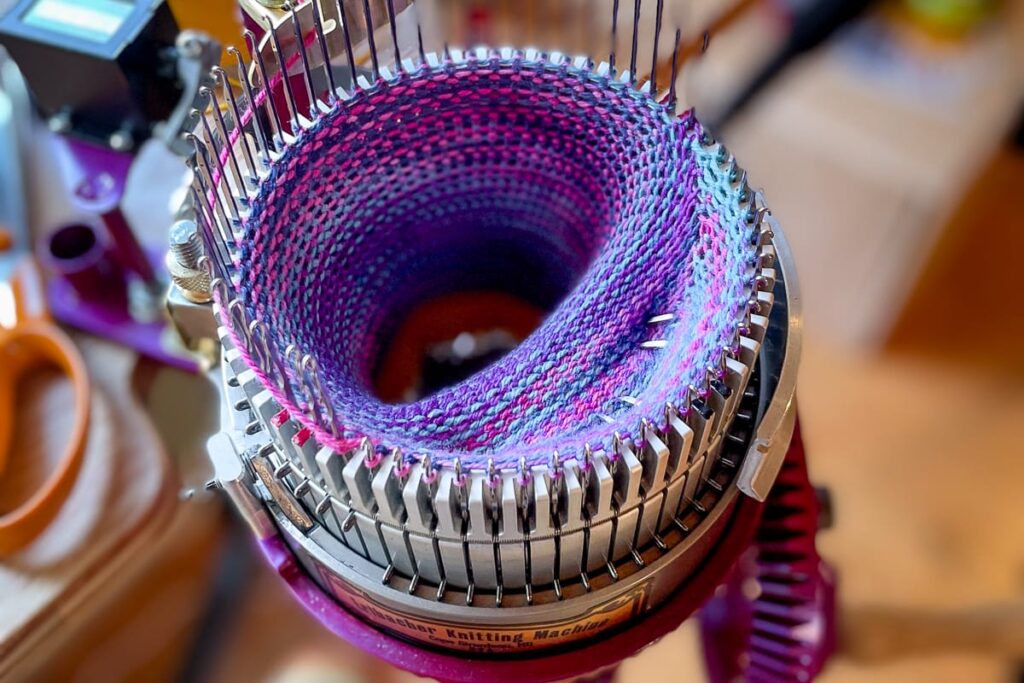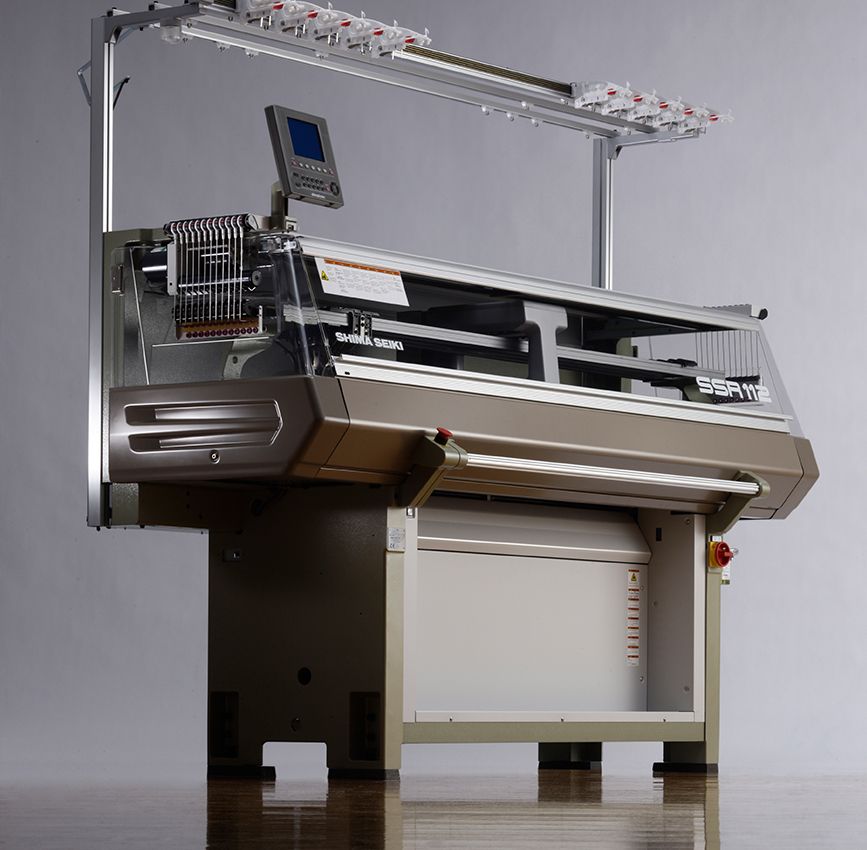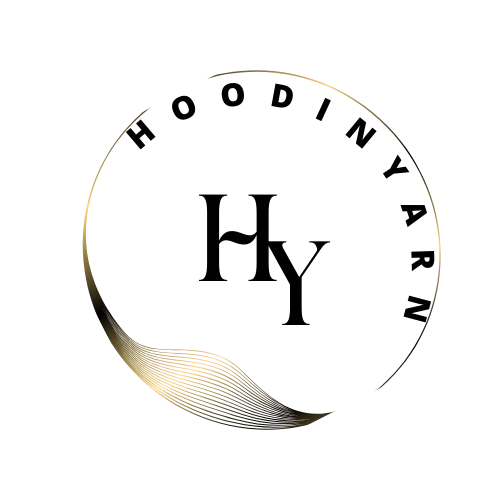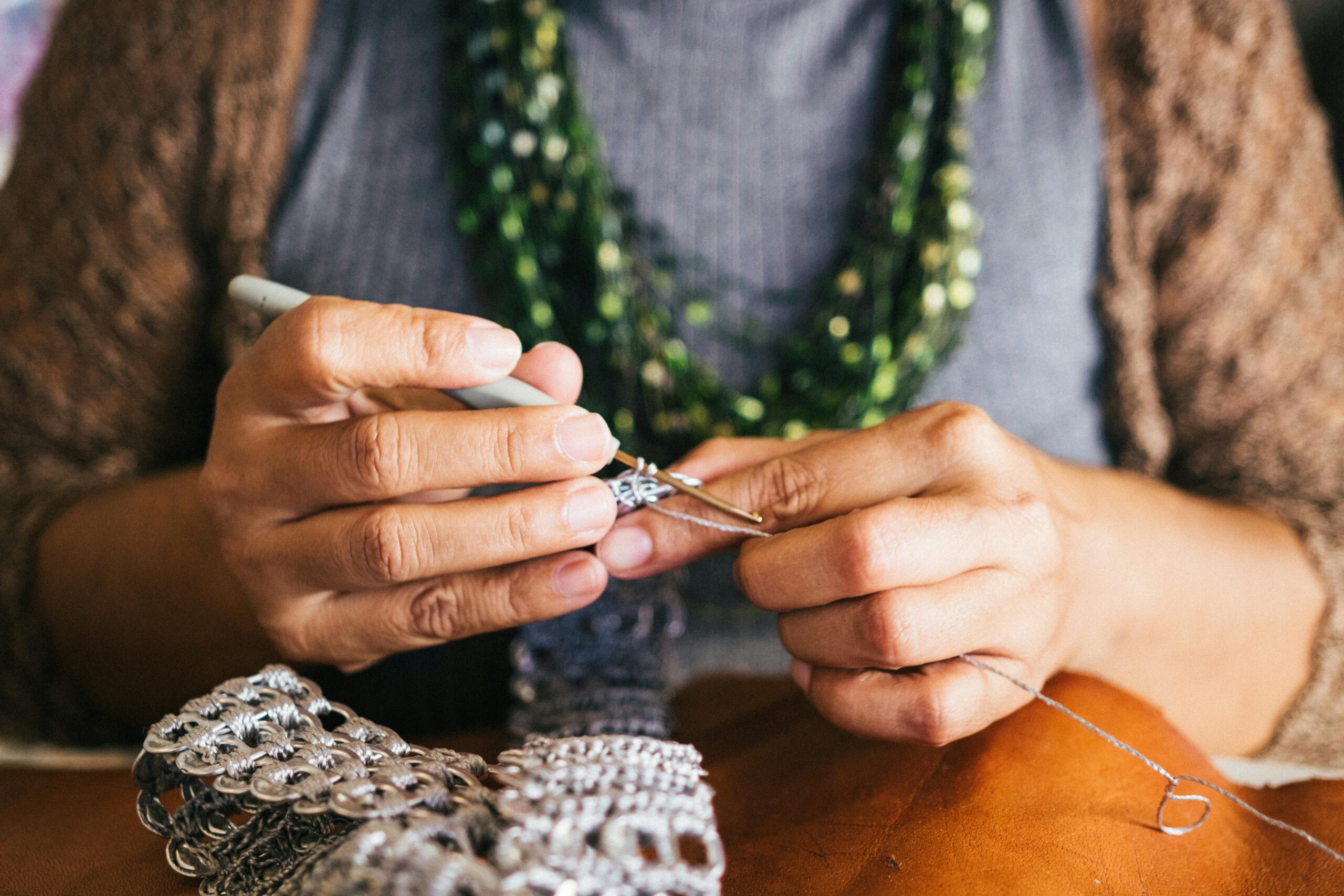
The knitting machine came later befor ot the skill of Crochet And Knitting has been practiced for many ages. Almost everything can be crocheted, including blankets, clothes, and even food! However, despite all this time, crochet is still unable to perform various tasks, one of which is being able to be performed by a knitting machine. We will discuss the reasons for that in this blog post, along with the benefits and drawbacks of machines and what makes a good knitting machine.
Can Crochet Be Done by a Machine?
Regretfully, a machine cannot perform crocheting. This indicates that each and every crocheted item you see is entirely handmade. This is because crocheting calls for a high level of ability and dexterity. It’s not the same as it is which may be completed by machine using pre-arranged stitches on an automated loom or frame; with these kinds of equipment, mistakes are more likely to occur!
Why Can’t Crochet Be Done by a Machine?
Crochet cannot be done by a machine, even though the machines have been available since the 1800s and are quite popular since they can generate enormous quantities of knitted cloth. These devices might be able to simulate the loops on a loom used in knitting or cloth weaving, but they can’t produce complex stitches like those found in crochet.
This is extremely difficult for these robots to accomplish since crocheting is more complicated than simply creating loops with yarn; each loop must be pulled simultaneously through another loop!
Automated production methods utilizing needles or hooks are not well suited for this operation, as it is challenging for a machine to imitate the dexterity required to accomplish this while preserving the correct stitch tension.
Crochet Machine Alternative
While there may not be a crochet machine, a knitting machine is likely close to what you’re looking for and will probably create what you want. You can use it to create a variety of projects quickly and easily, making it a great way to crank out some quick gifts for friends and family!
Why Can Knitting Be Done By Machine if Crocheting Can’t?
Because a knitted object has a continuous living edge rather than a single live stitch like a crocheted piece, It can be done by machine. The yarn loops are constantly joined together when knitting. This enables for simple automated manufacturing since it ensures that a loop on your needle or knitting machine shuttle is drawn through another loop in a way that leaves no live stitches behind and an open stitch at both ends!
How Do Knitting Machines Work?
The needle used in knitting machines has a hook attached to the end of it. Yarn loops will be pulled by the machine through one another and onto this hooked mechanism, referred to as “the knitting carriage.”
Depending on the kind and size of item being worked on, the knitting carriage can be arranged in a number of ways: flat (for blankets, for example) or circular (for garments, for example)! By modifying the tension on thecarriage, the user can also alter the tightness of their stitches.
Because the needles are arranged in pairs, they may produce stitches on both sides at the same time—one side makes knit threads, while the other produces purl stitches!
You can make a lot of crafts using a machine, such blankets and sweaters! Because circular needles on knitting machines allow you to knit in both directions, something that traditional hand knitters cannot accomplish without rearranging their work mid-project or utilizing two sets of needles, machines are also excellent for producing caps.
Do you need to know how to knit to use a knitting machine?
No, using a knitting machine does not require you to be proficient in knit. Yarn and needles are all that the user needs! Although they don’t have to be experienced knitters to use a knitting machine, there are advantages to being familiar with the appearance of stitches beforehand. Since every machine uses pairs of needles for different stitches (knit and purl), it’s useful to know which needle is used for what.
Is knitting by hand better than using a knitting machine?
Depending on the object you’re trying to construct, knitting by hand isn’t always preferable to it with a machine. For knitters who wish to create big amounts of the same item without having their hands cramp from all the hand-knitted work, knitting machines are a terrific tool. They are particularly helpful in circumstances where it is difficult or impossible to accomplish traditional knitting by holding needles and yarn with your fingers (due to age or injury). For knitters who struggle with tension—the tightness of the stitches— machines are also a valuable resource.
There are downsides to the machines as well. The most obvious is that the machine does all of the work for you; therefore, in addition to having to perform the work in question, repairing errors in the work it produces or in the tension of one row compared to another (a common problem) can be challenging and time-consuming.
Producing a greater range of goods by hand knitting surpasses the capabilities of the majority of consumer knitting machines. The majority of knitters also find hand knitting to be a soothing pastime and just like the process of it. Furthermore, it’s hard to top the affection that goes into a handcrafted present!
Pros of Knitting Machines:
- The machines are a time saver, and can produce many items in less than an hour.
- The machines don’t require as much skill to use them correctly as knitting things by hand (though they do take some getting used too).
- The machines are easier on your hands, which make them great for people who suffer from arthritis or other hand-related illnesses or disabilities.
- The machines have a very low cost of entry, and can be used for many different projects with minimal investment in yarns (though you will still need to buy the machine).
- You don’t really have to worry about uneven stitch tension when using a machine.
Cons of Knitting Machines
- Machine-knitted goods tend to be less durable than hand-knitted ones
- Additionally, the stitches can be more consistent and tight, which works well for some designs but not others (like sweaters).
- Certain shapes are hard to construct with the machines that are simple to make with your hands.
- When knitting with a machine, it might be challenging to identify errors, which increases the likelihood of errors in the final result.
- The machines are not the best option if you value quality above quantity or speed, as it takes a lot of time and practice to produce something that seems as though it was produced by hand (but they do make good items when done well).
Types of Knitting Machines
The fact that there are various kinds of knitting machines could surprise you. Knitting looms, flatbed knitting machines, circular knitting machines, and automated commercial knitting machines are the four main types of knitting machines.
Knitting Looms
The earliest kind of knitting machine is called a knitting loom. William Lee of Calverton was the first to invent them in the sixteenth century. He showed Queen Elizabeth I a demonstration of the machine since it was so groundbreaking.
Using a knitting loom, you simply draw down each hook along its length after finishing a row until there is no more slack in between them. The needles have hooks on them. This ensures that everything maintains its cohesiveness while maintaining speed without compromising quality.
Flatbed Knitting Machines
A flatbed knitting machine is an additional kind of the machine. The most popular kind of the machine is the flatbed kind, which is also typically less expensive than other models. Businesses who need to create huge numbers fast or inexpensively can benefit greatly from their ability to generate more goods in a shorter amount of time (just imagine how many sweaters you could make with one!).
Because these devices don’t require shaping, the flat pieces they generate have a lower likelihood of stretching when sewed together. Instead, they go straight from skein form to garment shape, with no modifications made during manufacturing!
Flatbed knitting maches are more complicated than looms and require the knitter to do all sorts of calculations in order for them to work properly. As the name implies, you’re only able to produce flat pieces on this, meaning that if your item needs multiple pieces, it will have seams along the side.

Circular Knitting Machines
A circular knitting machine is the next kind of machine. For creating hats or any other item that benefits from being produced in the round, circular machines are utilized. Similar to flatbed machines, these machines work in rounds so you can continuously adding yarn as needed for larger projects, rather than producing a single long piece.
If your finished creation has a seam that is visible on both sides of an item (like socks), you will need to be careful when sewing the item together because circular knitting machines are not very excellent at making seams in the fabric.
This is due to the fact that, depending on the type of material used, there will always be two rows where one row overlaps the other, which can make seaming challenging or impossible.
If you want to test machine and decide if it’s suitable for you, there are lots of small, entry-level circular knitting machines available at a reasonable price. A circular machine can also be used to quickly and cheaply manufacture caps as gifts!
Automated Commercial Knitting Machines
The huge, automated commercial knitting machine is the fourth type of the machine. They function similarly to flatbeds, except with only one single needle that moves up and down on its own. Less human intervention results in much lower production costs (albeit not without downsides). This kind of knitting machine can employ expensive materials and manufacture low-cost goods fast since its needles don’t require human assistance at every stage.
What to look for in a good knitting machine
When you go knitting, there are a few things you should consider. Its needle count should be the first item you check. The more on board, the better, but they will cost you money and occupy a lot less space than if there were fewer.
The amount of yarn that can be loaded simultaneously is another item to check. This is crucial because, if your project grows—or even simply begins to grow—this will become a problem that must be resolved right away!
Lastly, you ought to examine your machine’s speed. This is crucial because if it moves too slowly, you will end up spending a lot more time on projects and getting less done!




